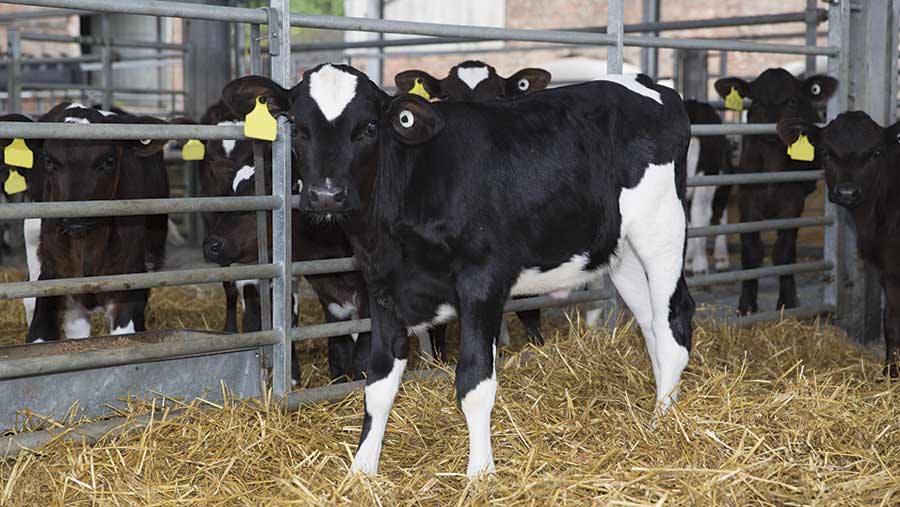Why feeding more milk to calves is more cost-effective
 © Tim Scrivener
© Tim Scrivener Farmers will be rewarded with lower overall rearing costs, improved efficiencies and better first lactation yields by feeding calves higher levels of milk.
This was one of the topics raised at the recent Mole Valley Farmers Calf Conference in Exeter by US dairy consultant, Dr Bob Corbett and Dr Alex Bach from The Department of Ruminant Production of IRTA in Spain.
They highlighted the need for farmers to shift their attention away from feed cost per head pre-weaning and instead focus on return on investment.
See also: One third of heifers failed to make second lactation
Dr Bach said the case for investing in the milk feeding stage was clear. “Early in life you get 60% feed efficiency, so for every 1kg of feed or milk powder consumed, you get 600g of gain.
When they’re 657-700 days old, feed efficiency is 7%, so now for every kilo you only get 70g of gain.”
That explained why feeding higher levels of milk actually resulted in lower total heifer rearing costs in a study which looked at calving animals at 22 months of age, weighing 650kg.
The research showed feeding calves eight litres of milk a day in the first two months of age and achieving gains of 1kg/day led to total heifer feeding costs of €1,809 (£1,583) at 22 months.
This compared with €1,838 (£1,608) when calves achieved 0.5kg/day when fed four litres a day. The optimum was identified as feeding six litres a day, which achieved liveweight gains of 0.8kg/day and cost €1,796 (£1,571).
Dr Bach said: “I don’t care if you have to put in a lot at the beginning, she’s still cheaper at the end.”
He also highlighted the significant positive impact faster growth rates had on future milk production. “For every 100g of additional daily gain in the first two months of life, you get 226kg of milk in the first lactation. So you get faster growth, she’s cheaper and produces more milk – it’s a free ride,” he said.
Calf nutrition
Dr Corbett also believed farmers could make significant gains by placing more attention on early calf nutrition.
“With genetic selection you can get 68-114kg more milk per lactation.But you can increase up to eight times more versus genetic selection just through nutrition in the first few months of age,” he explained.
With that in mind, he emphasised the importance of providing calves with high levels of milk replacer early on.
He added: “We use the term accelerated, but there’s nothing accelerated about it. We’re changing nutrition so the calf reaches its genetic potential. It’s a matter of giving them the nutrition they need.”
At best, calves fed on a “traditional” system of a 20% protein/20% fat milk replacer (CMR) fed at 125g/litre across two litres, twice daily, would achieve daily weight gains of 225g.
This was way off the target 800g/day weight gains needed to achieve an age at first calving of 24 months.
He suggested the following targets:
- Feed 15% of bodyweight in CMR during the first week of life (three litres, twice daily for average Holstein calf)
- Increase to about 20% of bodyweight at eight days of age (four litres, twice a day)
- Increase milk solids to at least 15% starting at the first feed and maintain until weaning
- Aim for CMR protein of 24-28% and fat of 15-20%
- Mixing rate of 150-160g/litre is best on average farm
